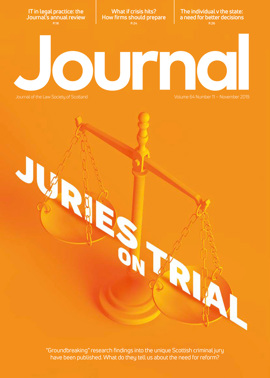IR35 and the private sector

Practitioners in all areas will have found it difficult to avoid the increased commentary of late around the changes coming in next April in the UK in respect of paying contractors who provide services through a personal service company (PSC). These changes will affect medium and large companies in the private sector and bring them into line with public sector employers. The PSC route has been commonly used until now, as it can be tax-efficient for contractors and clients/end-users.
The changes are expected to turn the contractor market on its head and cause many companies and contractors to look again at their working relationship. HMRC estimates £1.3 billion of revenue will be lost by 2023-24 if these changes are not implemented.
Many law firms are delivering services in new ways, making use of flexible resource options. This means that law firms who engage legal contractors (and those contractors themselves) will need to be aware of the changes. This is not just about the advice we must give clients.
Dealing with the “deemed employee”
The new rules will require the client/end-user to assess the status of contractors who provide services through a PSC, to determine whether they should be treated “as if” they are employees (or inside IR35) for tax purposes. Where they are a “deemed employee”, payments to them will need to be processed through payroll.
There are substantial cost implications.
The new rules will add the cost of payroll taxes into commercial negotiations with contractors who operate through PSCs and who are assessed as being “deemed employees”. The most substantial of these is the 13.8% employer national insurance contributions (NICs).
There will also be additional costs for administering the new rules. The responsibility for determining whether the contractor/PSC is a “deemed employee” sits with the client/end-user. It is responsible for the payments to HMRC. There is an HMRC online tool which can assist with this determination. The “check on employment status for tax” or “CEST” tool gives clients/end-users some certainty. It has the key advantage that HMRC will be bound by the output of the test, unless it has been obtained fraudulently. An improved CEST tool, as well as more detailed guidance, has been promised prior to April 2020.
Importantly, this change will not give these contractors employment status for employment law purposes. This is about how payments are treated for the purposes of income tax and social security benefit only. Having said that, the “deemed employment” test is very similar to the employment law test. The continued focus on employment status cases over the last few years means that employers of all shapes and sizes are required to consider carefully the makeup of their workforce.
Public sector lesson
Lessons can be learned by looking at how the regime has been implemented and adjudicated on in the public sector. Almost identical rules have applied here since 2017. It is estimated that £500 million has been gathered by the Government since then. The case of Paya Ltd v HMRC [2019] UKFTT 0583 (TC) shows us that the application of the relevant tests to real-life scenarios can be extremely difficult. So much so, even the panel of the First-tier Tax Tribunal (FTT) could not come to a unanimous decision.
It involved three television presenters who had each provided their services to the BBC via PSCs. These services were provided under a series of contracts with very similar terms over a period of five years.
By a casting vote, the FTT held that an employment relationship had been created and, therefore, that IR35 applied, meaning that the unpaid taxes would need to be repaid to HMRC. The decision was based on the three main factors used to determine employment status:
- Mutuality of obligations: the BBC was obliged to use the presenters’ services for a minimum number of days and the presenters were obliged to be available if called upon.
- Control: the BBC exercised control over the presenters whereby they had to attend meetings and training and follow its editorial guidelines. In addition, they were prevented from working for other broadcasters.
- Personal service: there was no real right of substitution.
Looking at the relationship as a whole, the FTT determined that an employment relationship existed.
The case highlights the complicated nature of IR35 – even the FTT panel was not entirely in agreement – and the importance of assessing the reality of working arrangements, not just the label given to them.







